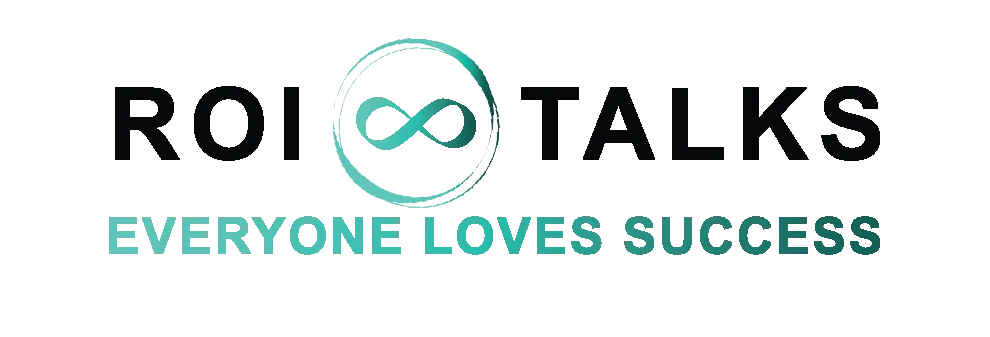Everyone Loves Success
ROI TALKS
Roi Talks Blog

What Is Communication?
In general, people tend to think of communication as a process of transmitting information from one person to another. This view often focuses on the words spoken or written, and may not take into account the full range of nonverbal cues that are also part of communication.
The Communication Cycle Model by Claude Elwood Shannon & Warren Weaver states:
“Communication is a very complex process that happens orally, in written form as well as in non-verbal form, and in which the message that is being sent, takes place in a certain context. Both the sender and the recipient can respond to each other in this model, with the sender and recipient alternating roles. This leads to a cyclical process.”
When you dig deeper communication is the act of exchanging information, thoughts, ideas, or feelings between individuals through various means such as spoken or written language, gestures, facial expressions, body language, or other forms of expression.
Communication is both an art, in that it requires creativity and skill, and science, in that it involves studying human behaviour and using research and data to understand and improve communication.
The art and science of communicating refer to the study and practice of how people use various methods to inform, influence and inspire themselves and others in a wholesome nourishing manner.
This can include verbal and nonverbal methods, such as speech, writing, body language, and media. Thus, communication includes studying how people interpret and respond to messages, and how communication can be used effectively in different contexts, such as in business, education, and personal relationships.
“Communication fuels the ties that bind, whether in relationships, business, or everyday interactions. Effective communication is as important to our well-being and happiness as the food we put into our bodies. It can be either healthy (and nourishing) or toxic (and destructive).” - Thich Nhat Hanh
Thich Nhat Hanh, a Buddhist monk and teacher, truly lived the art and science of communication. He emphasizes the importance of mindful and compassionate communication, which involves deep listening to others and seeking to understand them, rather than simply transmitting the information. Communication is not just about words, writing or even about understanding, rather it is about creating a deep connection between people.
Nourishing communication is the kind of communication that brings about understanding, mutual respect, and a sense of connection between individuals. It involves listening deeply to what others have to say, expressing oneself honestly and from the heart, and being open to different perspectives and points of view. Nourishing communication is characterized by a spirit of kindness, compassion, and empathy, and it can help to build trust, strengthen relationships, and promote cooperation and collaboration.
On the other hand, poisoning communication is the kind of communication that damages relationships, creates misunderstandings, and fosters conflict and division. Poisoning communication can take many forms, including criticism, blame, judgment, sarcasm, and disrespect. It often involves a lack of empathy or concern for others and a focus on one's own interests or agenda.
Poisoning communication can have serious consequences in both personal and professional settings. In personal relationships, it can lead to hurt feelings, resentment, and even the breakdown of the relationship itself. In business settings, it can damage team morale, decrease productivity, and even harm the reputation of the organization.
Thich Nhat Hanh emphasizes the importance of cultivating nourishing communication in all areas of life, including personal relationships, work, and community. By listening deeply, expressing oneself honestly and with kindness, and seeking to understand and empathize with others, individuals and organizations can build stronger, more productive, and more fulfilling relationships.
In business, this would mean that communication should not simply be a means of transmitting information or directives from management to employees (and vice versa). It is an opportunity to build relationships and foster a sense of community within the organization.
The art and science of communication involve being fully present and attentive at the moment, listening deeply to what others have to say, and speaking honestly and from the heart. This type of communication can help to build trust, understanding, and connection between individuals, which can be particularly important in a business context where teamwork and collaboration are often crucial to success.
Thus, it focuses on the importance of compassion in communication. This means that individuals should seek to understand and empathize with others, rather than simply trying to get their own way or advance their own interests. In business, this can mean taking a collaborative approach to problem-solving and decision-making and seeking to find win-win solutions that benefit all parties involved.
By applying these principles in a business context, individuals and organizations can create a much more healthy and more productive work environment, with better collaboration and teamwork, and ultimately, greater success.
ROI TALKS™
Marina Plaza - Office 1004 -1006
Dubai Marina, Dubai, UAE





